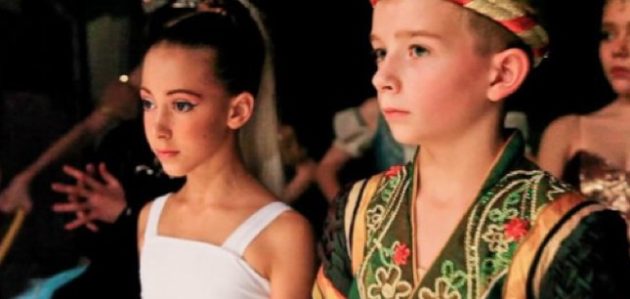REVIEW: First Position May Be Mostly About Ballet, But It's Also About Being Young

Documentaries don’t have to be technically great to be irresistible, and Bess Kargman’s First Position, which follows six young ballet dancers as they prepare for an elite competition, is a case in point. You may think you can guess what’s going to happen by the end of First Position: Some will win and others won’t, there will be some tears shed, this or that dancer will be sidelined by an injury – and yet somehow, even though nothing hugely surprising happens, the details Kargman captures somehow feel fresh. Maybe that’s because this isn’t just a documentary about ballet and the extraordinary discipline it requires; it’s also about youth and its attendant hopes and risks, spelled out in language that’s painfully universal.
Kargman follows her six young dancers on their way to the Youth America Grand Prix, an international dance competition held in New York and judged by a group of professionals including reps from ballet schools around the world: A dancer who does well in the competition might be rewarded with a scholarship, or even a slot in a ballet company. This competition is serious business for these kids, all of whom hope to make some sort of life for themselves by dancing. Eleven-year-old Aran Bell, an American who comes from a military family, is an elfin presence who introduces himself to Kargman’s camera, and to us, by trying to articulate what he loves about ballet: “I just love it so much. I can’t explain it.” He shows us around his home, where he demonstrates various torture implements used for stretching muscles. He also picks up a BB gun, wisely noting that it’s probably better not to shoot it – a reminder that this exquisite dancer is still, at heart, just a boy.
We also meet Rebecca Houseknecht, a middle-American teen who loves the color pink and whose high-school friends have nicknamed her Barbie, partly because of her ultra-shiny blonde hair and partly because of her mad flexibility. Then there’s the charming and understated Joan Sebastion Zamora, from Colombia, who hopes to do well in ballet so he can improve the lives of his family members back home, a risky proposition if ever there was one. Miko and Jules Fogarty, brother and sister, strive to do well under the watchful – possibly too watchful – eye of their mother. Most affecting of all is Michaela, a teenager who, as a child, was orphaned during the civil war in Sierra Leone. She and another girl were adopted by an American couple, and when Michaela explains how awestruck and grateful she is to have come so far in ballet, there’s no doubt about how much she means it. (We also see her mother, a white woman in her 60s, bent over a pot on the family’s kitchen stove as she dyes some stretch tulle for one of her daughter’s costumes. It’s sold as “flesh-toned,” she explains, but that means it’s flesh-toned for white people, requiring a bath in brown dye to match the color of her daughter’s skin.)
Kargman shoots the dancers simply but carefully as they rehearse and, ultimately, perform: There’s no fancy camera work or editing here, thank God. Her camera takes pleasure in their movement, and also tracks the occasional flicker of pain. (Michaela is forced to rehearse and dance despite having suffered an injury, lest she lose her shot at a scholarship or a job – her future hinges on this competition.) This is Kargman’s debut feature, and she’s adept at telling interlocking stories without getting sidetracked by unnecessary minutiae; the picture is as smooth as an expert, seemingly effortless plié.
There’s a great deal of joy in it, too. Kargman doesn’t make what these kids do seem easy, not by a long shot. But she does manage to capture, without words, the essence of why they’re driven to, as one of the dancers puts it, force their bodies to do all kinds of things they weren’t meant to do. As Joan performs in the movie’s finale, his movements are so fluid his muscles could almost be liquid, though we can clearly see how solid and defined they are. And Aran’s spritely routine, exuberant but disciplined, places him right at the magical midpoint between childhood and young adulthood. What drives these dancers to work so hard at creating beauty for our pleasure and delight? The answer is written on their faces and in their muscles; words would be useless to explain it.
Follow Stephanie Zacharek on Twitter.
Follow Movieline on Twitter.
